- In 2016, the Government of India started the “Pradhan Mantri Ujjwala Yojana” program to enable widespread access to liquefied petroleum gas (LPG). In an unprecedented effort, LPG connections were provided to over 80 million poor rural households in just three years. Yet, having an LPG connection does not mean that it is used regularly.
- Lack of knowledge about the severe health hazards of cooking with solid biomass is a relevant barrier in this context. An experimental study in Rajasthan shows that health messaging can substantially increase the probability of regular LPG use among poor rural households.
- Thus providing health information can usefully complement other measures such as an increase in LPG subsidies targeted to the poor.
While technological innovation is crucial to advance in fields such as clean energy and health care, putting readily existing solutions to the service of the population is at least as important.
According to the World Health Organisation, several million people die prematurely from household air pollution every year, about half a million in India alone (WHO 2019; Health Effects Institute 2019). This is caused by cooking with traditional biomass such as cow dung and firewood. Alternative cooking solutions are readily available. In 2016, the Government of India started the “Pradhan Mantri Ujjwala Yojana” program to enable widespread access to liquefied petroleum gas (LPG). In an unprecedented effort, LPG connections were provided to over 80 million poor rural households in just three years. Yet, having an LPG connection does not mean that it is used regularly. Indeed, many rural households that have received a new LPG connection through the program continue to do the bulk of their cooking the traditional way—burning cow dung and firewood in their chulha (cooking stove).
This comes as no surprise to researchers studying household energy transitions: the move to a new energy source is usually a gradual process and takes time. It often involves a substantial period of stacking of multiple fuels (e.g.,Cheng and Urpelainen 2014).
However, given the morbidity and mortality associated with indoor air pollution from use of biomass based cooking fuels, there is no time to be lost. The Covid-19 pandemic has further brought home the need to act urgently given the link that research has established between air pollution, respiratory diseases, and the deadly effects of the virus (e.g., Conticini et al. 2020; Wu et al. 2020, INSPQ 2020). But what can be done?
Conventionally, important economic factors that have limited consumption among poor households are restricted availability and the cost of individual LPG cylinders. Together with its oil marketing companies, the Indian Ministry of Petroleum and Natural Gas has sought solutions and considerably broadened the network of sales agencies in recent years. Furthermore, they moved from general subsidies for LPG to subsidies oriented towards the poor, which, in principle, should make it possible to target the subsidies to those who really need them. In the current Corona crisis, LPG cylinders are even provided free of charge to those in need. These are important steps and they need to be continued. Yet, this may not suffice to motivate people to a more rapid adoption of LPG as their standard cooking fuel.
In an experimental study supported by the Indo-Swiss Joint Research Program in the Social Sciences (Zahno et al. 2020[KKM1] ) we focused on a simple but crucial factor: information. People need to understand what the stakes are. It is not primarily about convenience. It is about combating deadly illness. And, as our study reveals, people are simply not aware of this.
Hence providing them with the relevant information should make a difference. And indeed, the evidence we collected suggests that it does. In our study, students from Bikaner Agricultural University took a few minutes to explain the main WHO messages to households in rural Bikaner district (Rajasthan) based on a simple picture card. The sample studied consisted of 500 randomly drawn households among Ujjwala beneficiaries that were not yet regular LPG users, divided into an intervention group (receiving health information) and a control group (receiving more general, non-health related information on LPG). The effect of the health information on both knowledge and LPG consumption were strong and significant.
Effects on health knowledge
Despite the brevity of the health messaging, and the fact that it was carried out by unknown students rather than, say, familiar health and social workers belonging to these villages, people’s knowledge clearly increased. Among the households in the control group, a mere 13% were aware of any serious health hazards related to cooking with traditional biomass. A majority was aware of some irritation of throat and eyes, something women experience directly while cooking. But they tended to believe that these were just some minor transitory effects, and did not see the link to major diseases such as pneumonia, lung cancer, cataract, and threats to child development. 27% were of the opinion that there were no health effects at all (see Figure 1).
In contrast, among respondents that received the health message, 48% reported to be aware of serious adverse health effects, and the total share of individuals who reported to be aware of some health risks (serious or less serious) increased to 94%. We verified this outcome by asking respondents to indicate, for a number of illnesses, whether or not they were related to indoor air pollution. Respondents that received the brief health message did significantly better at this task.
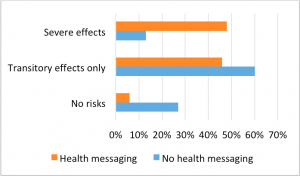
Figure 1: Risk awareness (% respondents), by experimental group
Source: Zahno et al. (2020: 20)
Behavioural effects of health information
The increased health knowledge translates into substantially greater use of LPG. Price reducing vouchers that could be used only within a pre-defined deadline, were provided to the households. Local licensed agencies or distributors of the LPG cylinders collaborated in the process, honouring these vouchers when households purchased a refill of their cylinder. The deadline was chosen such that only households who doubled their LPG consumption as compared to previous consumption levels could make use of the vouchers.
The brief health information we delivered increased the share of households using the vouchers from 30 to 41 percent. Compared to the control group, households that received the health information were thus about 30% more likely to double their LPG consumption.
Information versus price effects
While traditional fuels can be purchased in small quantities at relatively low cost or even directly collected, every LPG refill represents a major investment for poor rural households. Thus increasing the LPG subsidy clearly provides important incentives for a fuel switch. Our results suggest that this policy can be usefully combined with the information policy discussed above. Figure 2 reveals that an increase in the share of households that double their LPG consumption by about 20 percentage points can be achieved, for instance, with a combination of the health information and an increase in the discount on the voucher for a cylinder by 125 INR.
We can also consider the two policies of health messaging and subsidy separately and compare the effects. We find that, on average across the range of observed values in the sample, enhancing the value of the discount on the voucher by 40 INR increases voucher use by about 10 percentage points, which corresponds to the size of the effect from health messaging. The discount represented by the value of the voucher can be directly interpreted as the required subsidy on an LPG cylinder.
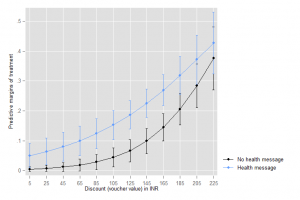
Figure 2: Probability of voucher use, by voucher value (subsidy) and treatment (health information)
Source: Zahno et al. (2020, Appendix S5: 4)
The results of our study thus show how important it is to inform people about the substantial health benefits involved. This allows them to better assess their own interests, and to take their decisions accordingly. Health information thereby motivates behaviour in the right direction and usefully complements the government’s existing LPG expansion policies.
Overall, our results suggest that a better understanding of health benefits of LPG among rural households will lead to a more rapid fuel switch and thereby significantly improve public health. Thus, including health information in LPG marketing campaigns could make these campaigns significantly more effective.
Our study was completed quite some time before the start of the Covid-19 pandemic. However, the emerging research on the links between Covid-19 and respiratory diseases makes progress on the spread of clean cooking even more urgent. Based on our evidence for the role of health information, the current policy to provide LPG free of charge should also be presented in this light. It is not just useful to prevent people from leaving their houses to collect cow dung or firewood. It is even more useful to avoid indoor air pollution, and the significant respiratory and other diseases that come along with it, and that represent important co-morbidities increasing the danger of viruses such as Covid-19.
References
Cheng, Chao-yo and Johannes Urpelainen (2014): Fuel stacking in India: Changes in the cooking and lighting mix, 1987–2010. Energy 76: 306–17, https://doi.org/10.1016/j.energy.2014.08.023
Conticini, Edoardo, Bruno Frediani, and Dario Caro (2020): Can atmospheric pollution be considered a co-factor in extremely high level of SARS-CoV-2 lethality in Northern Italy?, Environmental Pollution, https://doi.org/10.1016/j.envpol.2020.114465
Health Effects Institute (2019): State of Global Air 2019: Special report, https://www.stateofglobalair.org/sites/default/files/soga_2019_report.pdf
INSPQ (Institut National de Santé Publique du Québec) (2020): Environnement intérieur, https://www.inspq.qc.ca/publications/2992-environnement-interieur-qr-covid19
Wu, Xiao, Rachel C. Nethery, Benjamin Sabath, Danielle Braun, and Francesca Dominici (2020): Exposure to air pollution and COVID-19 mortality in the United States, preprint, https://doi.org/10.1101/2020.04.05.20054502
Zahno, Martina, Katharina Michaelowa, Purnamita Dasgupta and Ishita Suchdeva (2020): Health awareness and the transition towards clean cooking fuels: Evidence from Rajasthan, in: PLOS ONE 15(4), e0231931, https://doi.org/10.1371/journal.pone.0231931

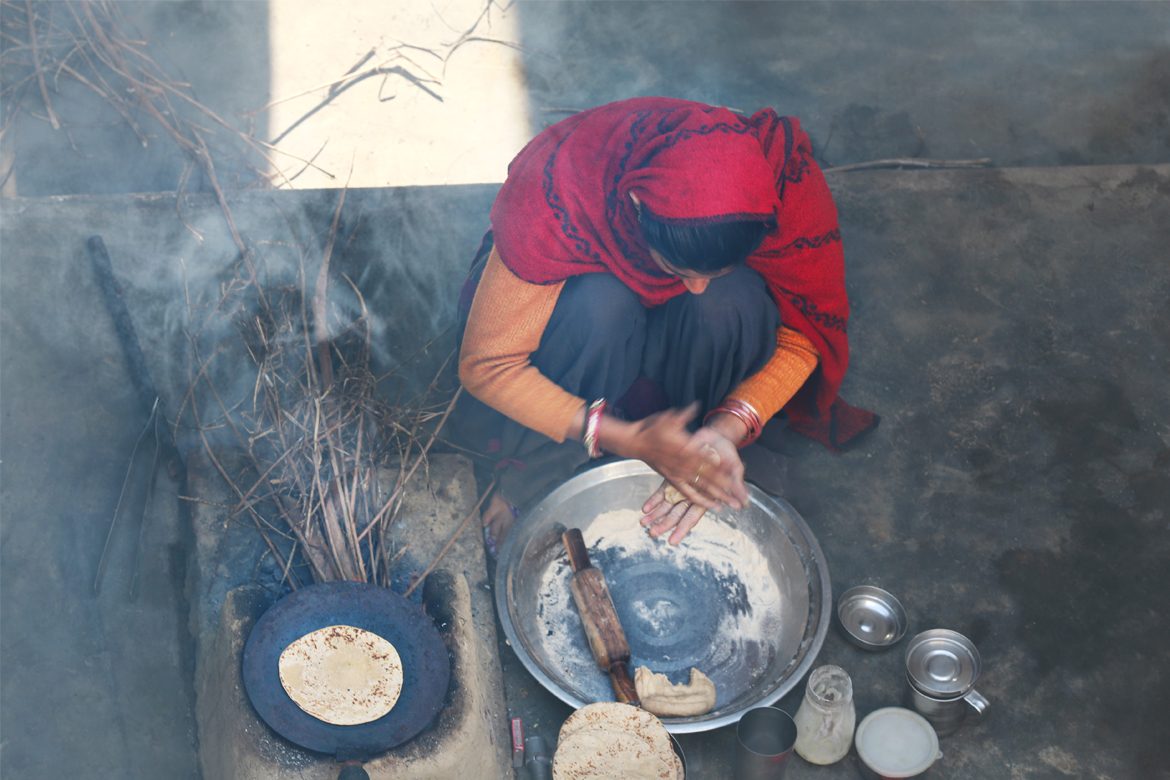
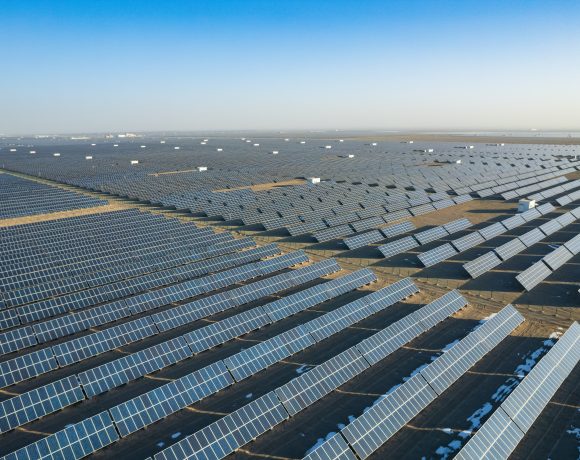
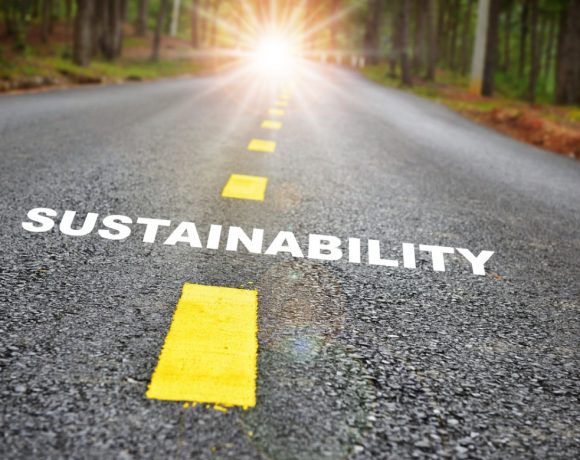
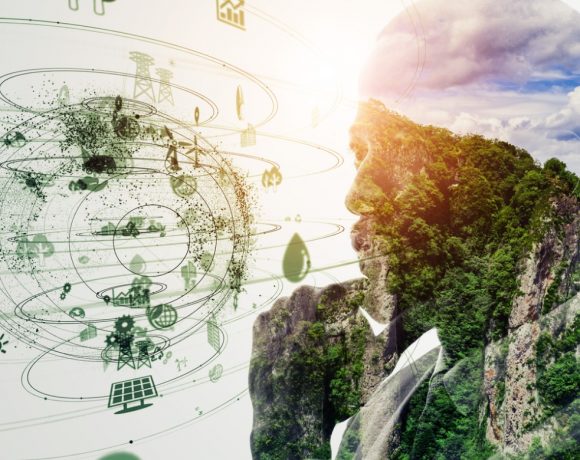

NO COMMENT